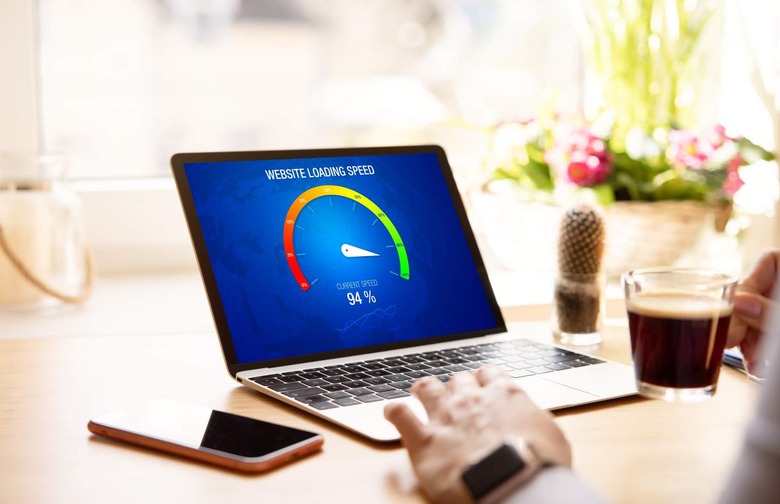How To Tell If Your Home Internet Is Being Throttled
Having internet at home usually implies a stable and reliable connection, but that is not always the case. If you find that your internet connection is not working as well as it should be, it's possible it's being throttled. As your connection is shared by many users connected to the same cell tower, internet service providers (ISPs) sometimes limit the bandwidth of certain users. This may result in problems such as websites taking much longer to load, streaming services such as Netflix failing to work, and many other annoying issues.
Resolving this may be as simple as waiting to see if the problem clears up over a day or two. Your ISP may be throttling your connection only during the busy period when many users are online at the same time. However, if the problem persists, it's worth contacting your service provider to have this issue resolved. If you want to find out how to tell if your home internet is being throttled, keep reading as we go over some of the easiest ways to do so.
Start by checking your monthly data usage. Many internet providers set data caps. When exceeded, your internet remains connected, but the bandwidth is heavily limited. If you're on a limited-data plan, check how much you've used up and refer to your ISP if you've gone over the limit. However, in many cases, you may be well within your data plan and your connection will still be throttled. If that's the case, we recommend running a speed test and then using a VPN client to test the accuracy of your results.
Run a speed test
The first step is to check your internet speed. Every contract offers certain download and upload speeds. If your home internet is consistently not hitting those marks, it might be throttled. It's worth noting that there are other factors that may affect the speed of your connection, such as the device you're using the internet on. Take note of that when you're testing. In an ideal scenario, test the speeds separately on all the devices you use and take notes to remember the exact results.
Start by running a speed test — we recommend using Ookla, but you can try several different tests and compare the results. Let the test run for as long as it needs to and write down the download, upload, and ping values that it returns.
If you want to be extra certain, try the test several times at different times of the day to check whether your internet is being throttled only during busy hours. Keep in mind that you shouldn't be actively using your connection while running a speed test — turn off any downloads, Netflix, and other websites.
Use a VPN client
Your speed test data alone may be enough to contact your ISP but to truly check if your internet is being throttled, you should download a free and reputable VPN client. A VPN reroutes your connection through another server, so this is a good way to check if the slow internet speeds are due to interference from your ISP or some other issue.
To test this, find a free VPN client of your choosing. One of the best free-to-use VPNs is ProtonVPN, but there are also other paid services that may offer a free trial, such as NordVPN, ExpressVPN, and Surfshark. Pick one, head over to its website, download it, and then install it.
Run the VPN client and connect to a server in your country. Pick a location as close as possible to where you live, otherwise, the results will be inaccurate. With your VPN enabled, head on over to the speed test website once again and run the same test. Write down the speeds and compare them to the ones you've previously recorded.
The verdict will determine whether your home internet is being throttled. If your internet speeds are roughly the same with and without a VPN, this means that the problem might lie elsewhere. You can still contact your service provider for assistance.
If your internet speeds are noticeably better when you're connected via a VPN client, this means that your internet is likely being throttled. Contact your ISP and provide them with your speed test data in order to try to fix this problem.


